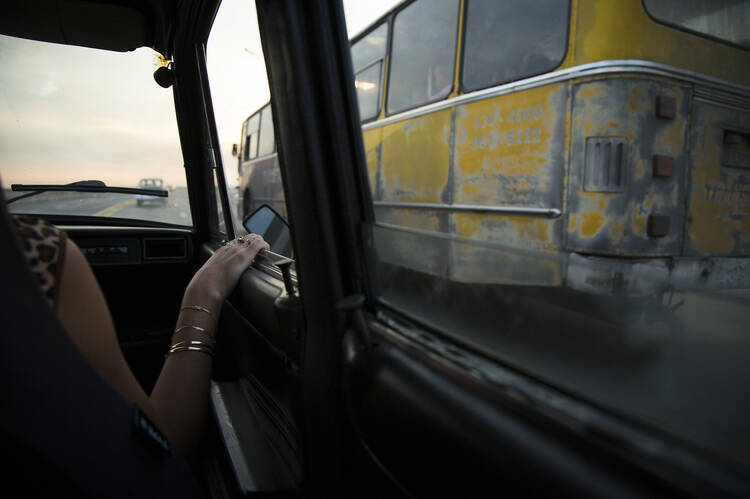On April 19, we called a young friend in Havana to learn how people were responding to the election that day of Miguel Díaz-Canel as Cuba’s new president. Our friend engaged in chitchat for a few minutes before we interrupted and asked, “What about the election? You’ve said nothing about this historic change in leadership.” “Oh,” she responded. “Nobody is paying much attention to that. There are no lemons in the market. That’s what we care about.”
Lemons, she explained, are needed for mojitos, which are needed to keep the tourism industry afloat.
For the first time in 59 years, a Castro will not be heading the Cuban government, and a new generation is poised to lead the country. Mr. Díaz-Canel turned 58 the day after his election, and the three new vice presidents (there are six in all) range in age from 48 to 52. More than half of the National Assembly, the body that elected the president and vice presidents, are deputies who had not served previously in the legislature. It is evident that the Castro era has ended. Yet when one era ends a new one does not immediately replace it. The nature of Cuba’s next era may not be clear for several years.
In his first speech as the new president, Mr. Díaz-Canel suggested that he would maintain his predecessors’ plans for gradual change. Declaring that he “will be faithful to Fidel and Raúl,” he noted that former president Raúl Castro, who continues as first secretary of the Cuban Communist Party (P.C.C.) until 2021, “will take the lead on decisions of greatest importance for the present and future of the county.” Indeed, Mr. Díaz-Canel had a reputation for loyalty and caution as he moved up the ranks of the P.C.C. and then into the government. He had been first vice president since 2013 and previously served as a member of the P.C.C.’s political bureau and as first secretary of the P.C.C. in two provinces.
For the first time in 59 years, a Castro will not be heading the Cuban government, and a new generation is poised to lead the country.
During Raúl Castro’s 10 years as elected president, Cuba underwent several changes. More than 30 percent of Cuba’s labor force now works in the private sector, many as owners of small businesses. Cubans can travel freely and leave the island for up to two years without losing citizenship or property rights. Avant-garde arts are flourishing on the island, and the percentage of Cubans using the internet went up to more than a third—to 40 percent—between 2011 and 2016.
Still, there are no lemons in the market. The new leadership will have to build its legitimacy on the basis of improved economic conditions. Despite his inclination to move cautiously, President Díaz-Canel needs to make some significant changes to energize the population and improve morale. Many educated young Cubans, who hold the keys to the country’s development, are leaving Cuba, which is has the Western Hemisphere’s oldest population.
Cuba’s new leader may feel he has to show public fealty to the older generation of the country’s revolutionary leaders because they still carry some influence. Understandably, he and other officials also worry that certain policy trajectories, like pursuing unregulated foreign investment or unrestrained private sector wealth, might lead to widespread dislocations or an irreversible dismantling of the social gains achieved during the last 60 years. Yet the challenges President Díaz-Canel faces—creating a sustainable development model that maintains Cuba’s egalitarian and communitarian values, establishing a single currency, and strengthening partnerships with other countries while avoiding dependence on a single one—can only be met by enacting major changes in the existing rules and institutions.
While Raúl Castro will hold titular authority as the leader of the Communist Party for three more years, he is said to be building a retirement home in Santiago de Cuba, 550 miles from Havana. There will be only one person in Cuba’s capital responsible for making sure there are lemons in the market. Miguel Díaz-Canel has not shown us how he plans to do that, and until he does, the new era that awaits Cuba will not have begun.










Elections?
Is this a joke?
From what I understand Diaz is a figure head and Raul Castro still controls the reigns through the real power in Cuba. His son runs the secret police and and his son in law runs the military.
But who knows Diaz may be as enlightened as Maduro in Venezuela.
This is really an amatuer article without looking into Diaz-Canel's background as a leader the people look up to and as a pioneer in working for justice and truth in his career. He is trusted by the people in Cuba involved in their country and the rest of the people see that and continue with their life as effected by the total US blockade that is meant to starve and deprive the Cuban people into submission to corrupt US business practices. The authors do not mention the biggest hurdle, the blockade and it's opposition by all countries of the world. Continuously as other countries (Vietnam, EU, Russia, China, Brazil, India, Canada, France, Italy, Spain) break from the harsh regulations of the blockade and create economic ties with Cuba, US workers and farmers will be left by the wayside and become roadside kill for the ruling Trump class. All aspects of the economy are improving and in 2015 15,000 young Cubans returned.